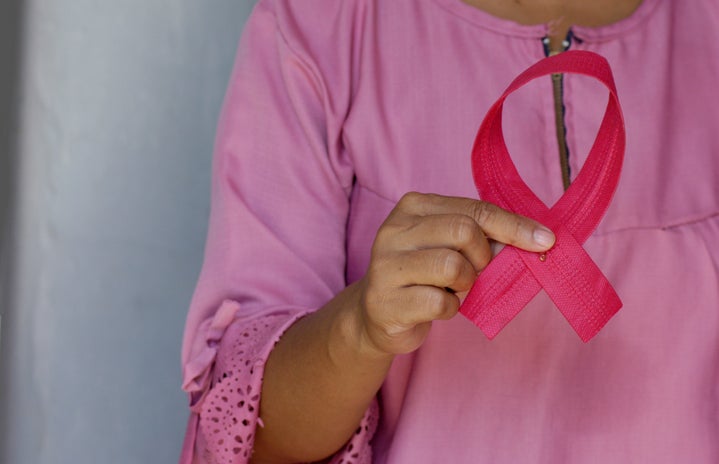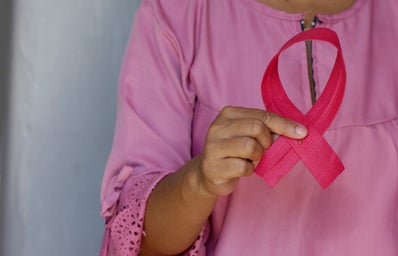A breast self-exam is an important way to find breast cancer early, where it’s more likely to be treated successfully. Breastcancer.org explains that, while no single test can detect all breast cancers early, performing breast self-exam as well as other screening methods and regular physical exams by a doctor, mammography, and in some cases ultrasound and/or MRI can increase the odds of early detection. The CDC states that while most breast cancers are found in women who are 50 years old or older, breast cancer also affects younger women. Women who are younger than 45 years old account for about 11% of all cases in the United States.It’s also important to have open conversations with family members about if breast cancer runs in your family because about 5% to 10% of breast cancer cases are thought to be hereditary. It is difficult for women of any age to receive a diagnosis and treatment, but young survivors may find it especially devastating. It is recommended that all women routinely perform breast self-exams as a step of their overall breast cancer screening strategy.
How to do a breast self-exam. Protocol found on Breastcancer.org:
Step 1:
Look at your breasts in the mirror with your shoulders straight and your arms on your hips. Make sure…
- Breasts are their usual size, shape, and color
- Breasts are evenly shaped without visible distortion or swelling.
If you see any of the below, bring them to your doctor’s attention
- Dimpling, puckering, or bulging of the skin
- A nipple that has changed position or an inverted nipple (pushed inward instead of sticking out)
- Redness, soreness, rash, or swelling
Step 2:
Raise your arms and look for the same changes.
Step 3:
While you’re at the mirror, look for any signs of fluid coming out of one or both nipples. This could be watery, milky, or yellow fluid or blood.
Step 4:
Next, feel your breasts while laying down, using your right hand to feel your left breast and then your left hand to feel your right breast. Use a firm, smooth touch with the first few finger pads of your hand, keeping the fingers flat and together. Use a circular motion, about the size of a quarter.
Cover the entire breast from top to bottom, side to side- from your collarbone to the top of your abdomen, and from your armpit to your cleavage.
Follow a pattern to be sure that you cover the whole breast. You can begin at the nipple, moving in larger and larger circles until you reach the outer edge of the breast. You can also move your fingers up and down vertically, in rows, as if you were mowing a lawn.
Be sure to feel all the tissue from the front to the back of your breasts: for the skin tissue just beneath, use light pressure; use medium pressure for tissue in the middle of your breasts; use firm pressure for the deep tissue in the back. When you’ve reached the deep tissue, you should be able to feel down your ribcage.
Step 5:
Finally, feel your breasts while you are standing or sitting. Many women find that the easiest way to feel their breasts is when their skin is wet and slippery, so they like to do this step in the shower. Cover your entire breast, using the same hand movements described in Step 4.
Get to know your boobs. The upper, outer area, and near the armpit. The lower part of your breast can feel like a sandy beach. The area under the nipple can feel grain like. Another part might mimic the feel of oatmeal. If you think you feel a lump, don’t panic. Most women have some lumps in their breasts all the time, and most of them don’t turn out to be cancer. Hormonal changes, a benign breast condition, or an injury can be the result of this. At the same time if you’ve noticed something new and worrisome, don’t hesitate to call your doctor. This is important for changes that last more than one full menstrual cycle or seem to get bigger or more prominent. The best healthcare provider to call would be your gynecologist, primary care doctor, or a nurse practitioner.
Make examining your breasts a routine so you will learn more about them and the easier it will become for you to tell if something has changed. Try doing it once a month, and examine yourself several days after your period ends, when your breasts are least likely to be swollen and tender. Journal your findings to remember what is “normal” for your breasts. Be proactive with your health and share these tips with your loved ones.
This is link of info: https://www.breastcancer.org/symptoms/testing/types/self_exam
CDC Link: https://www.cdc.gov/cancer/breast/young_women/index.htm



